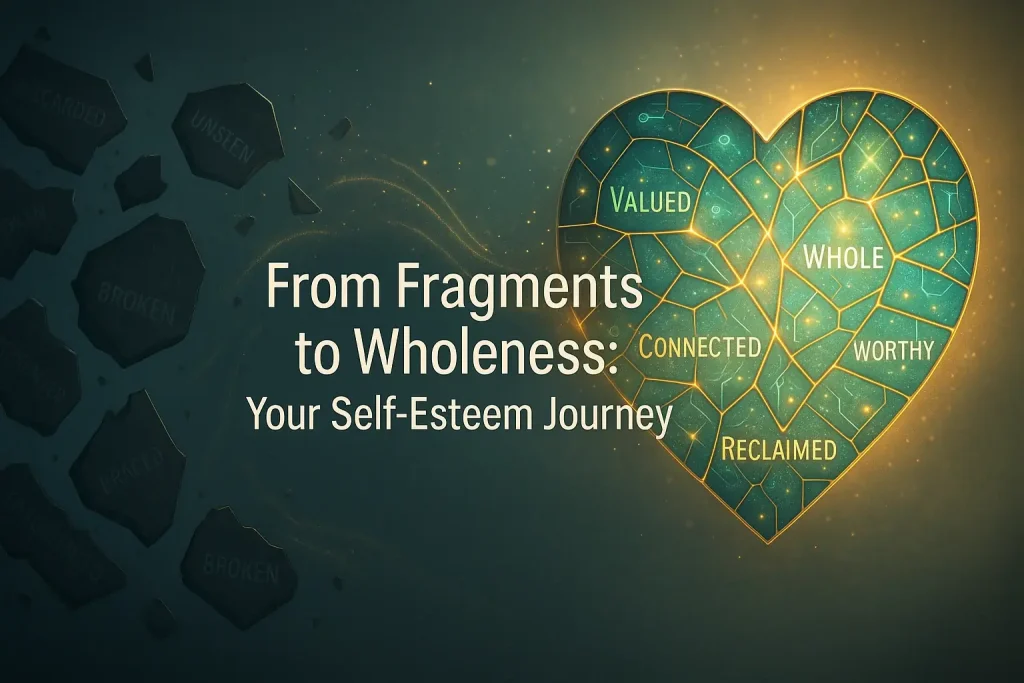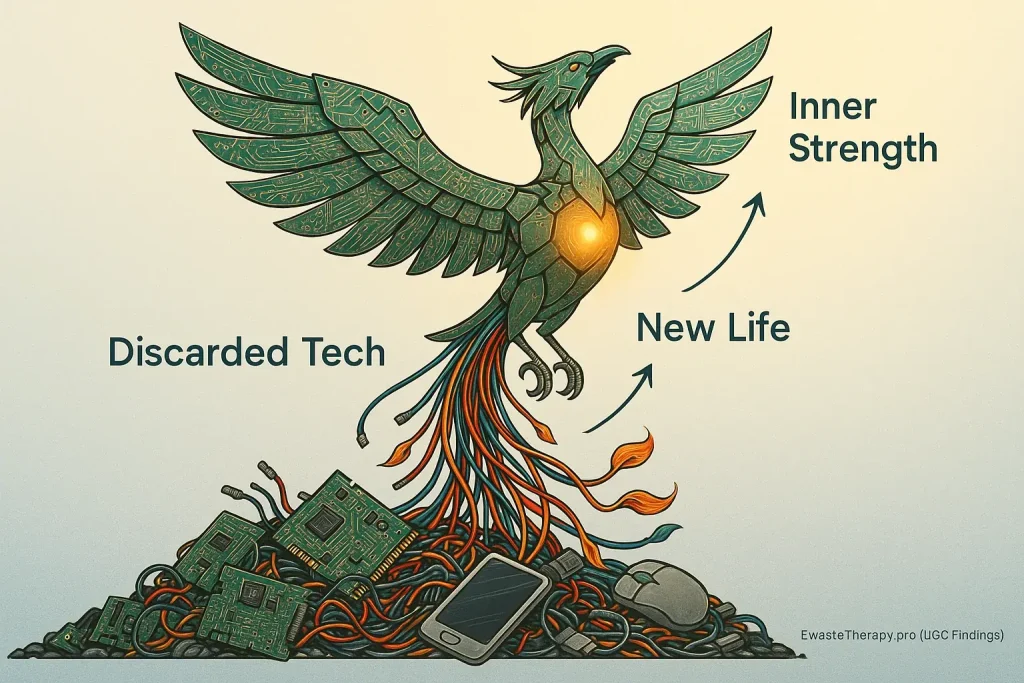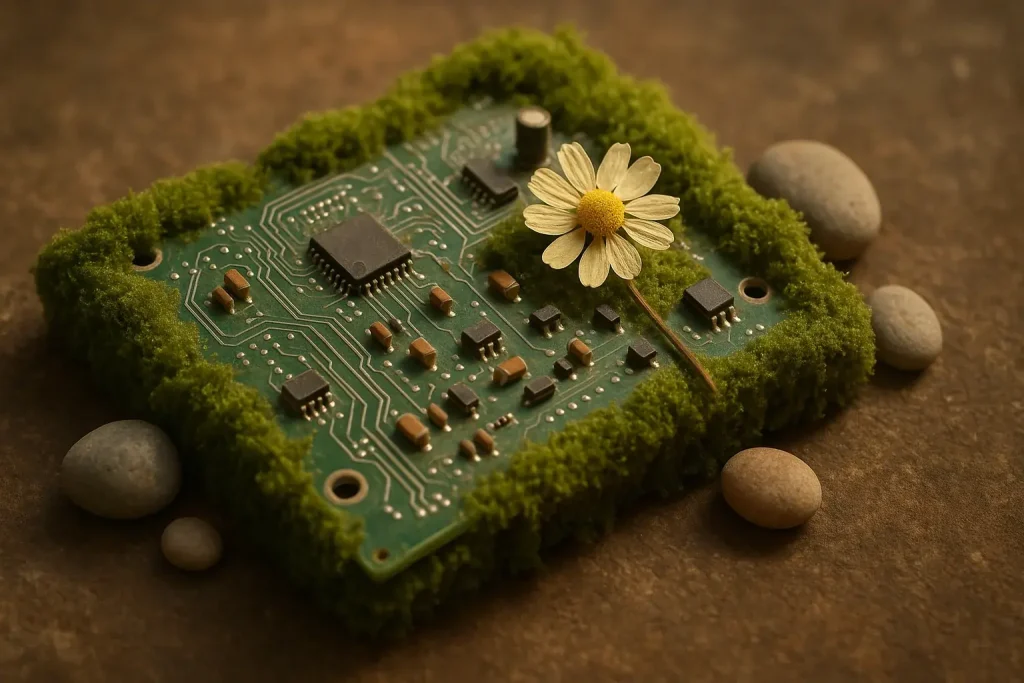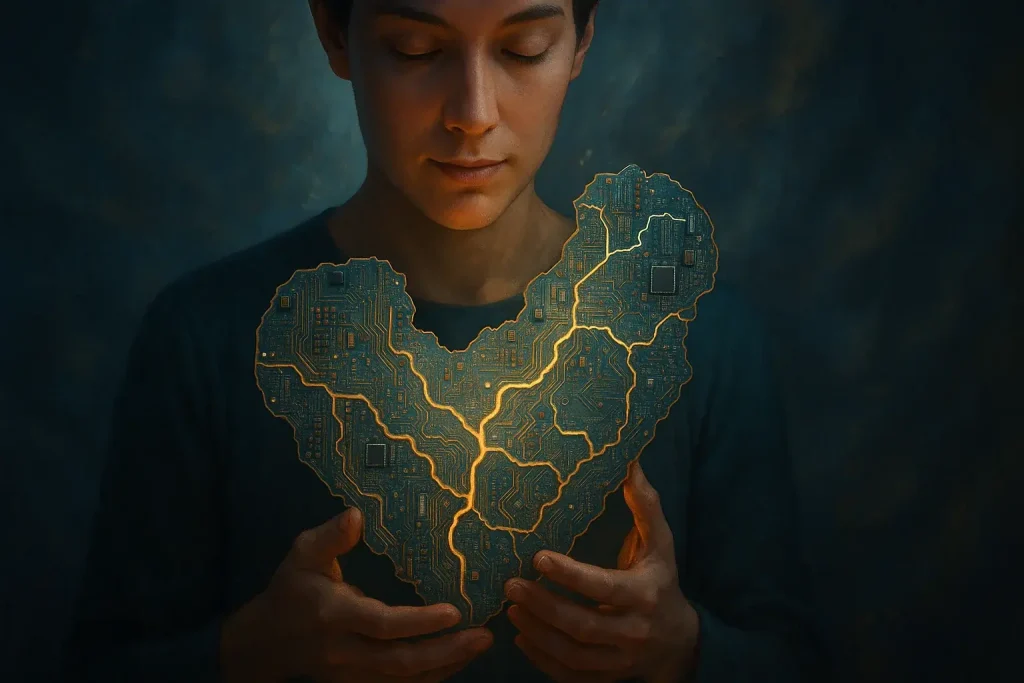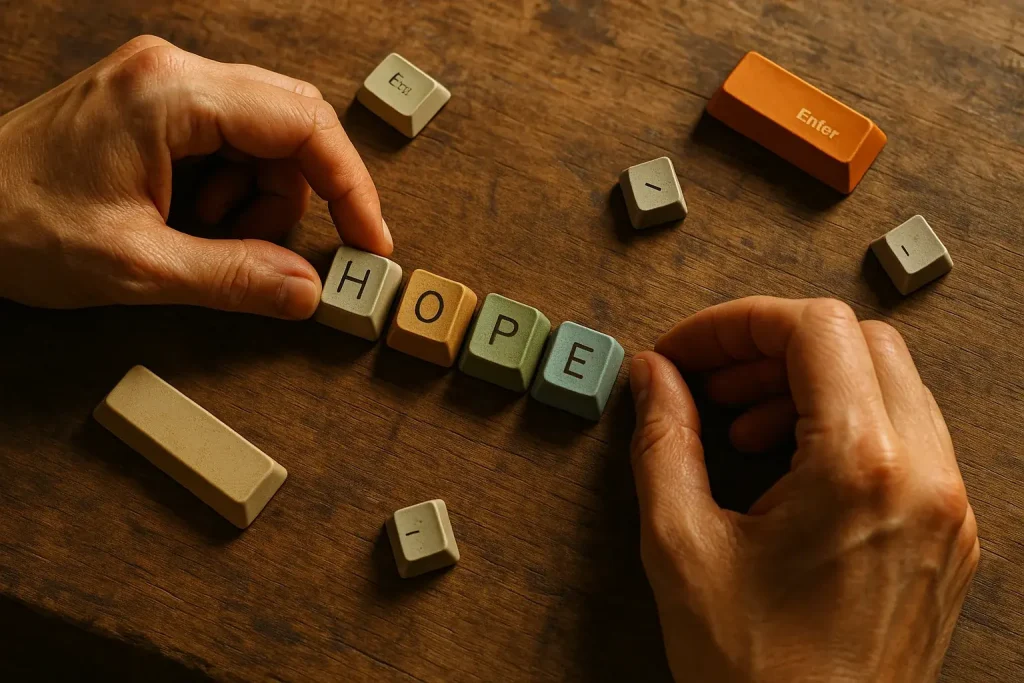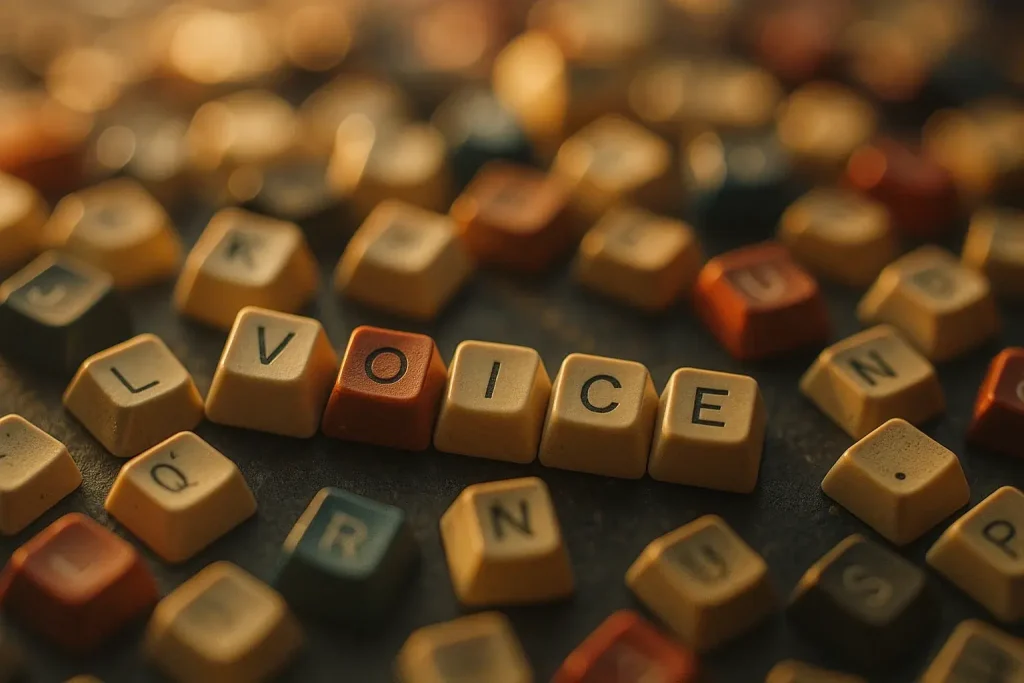When Brokenness Becomes Art: Finding Solace in E-Waste Assemblages

That heavy, aching feeling after a loss? The one leaving you fragmented. Your world seems shattered. Grief carves a deeply personal path. Standard approaches sometimes fall short. E-waste art provides a unique, tangible medium for this journey. It offers a creative outlet when words cannot form, allowing emotions to find expression.
Many who have experienced profound loss often report feeling deeply broken. A disconnect from their former selves is common. Our findings from user narratives reveal that working with discarded, broken technology unexpectedly resonates. It mirrors their own internal landscape of grief. Here's an insight many discover: handling these fractured electronics can be incredibly validating. It echoes feelings of being 'discarded' or 'broken.' This process offers a path to reassembly, forming unique e-waste assemblages and a quiet acknowledgment of shared vulnerability.
This therapeutic work isn't about fixing what's broken in life. It centers on transformation. You transform the discarded. Physically. Emotionally. Giving new purpose to old tech creates a powerful metaphor. This act helps individuals find new meaning in their own lives after loss, piece by piece.
Why Broken Components Speak to Our Sorrow: The Deep Symbolism of Discarded Tech
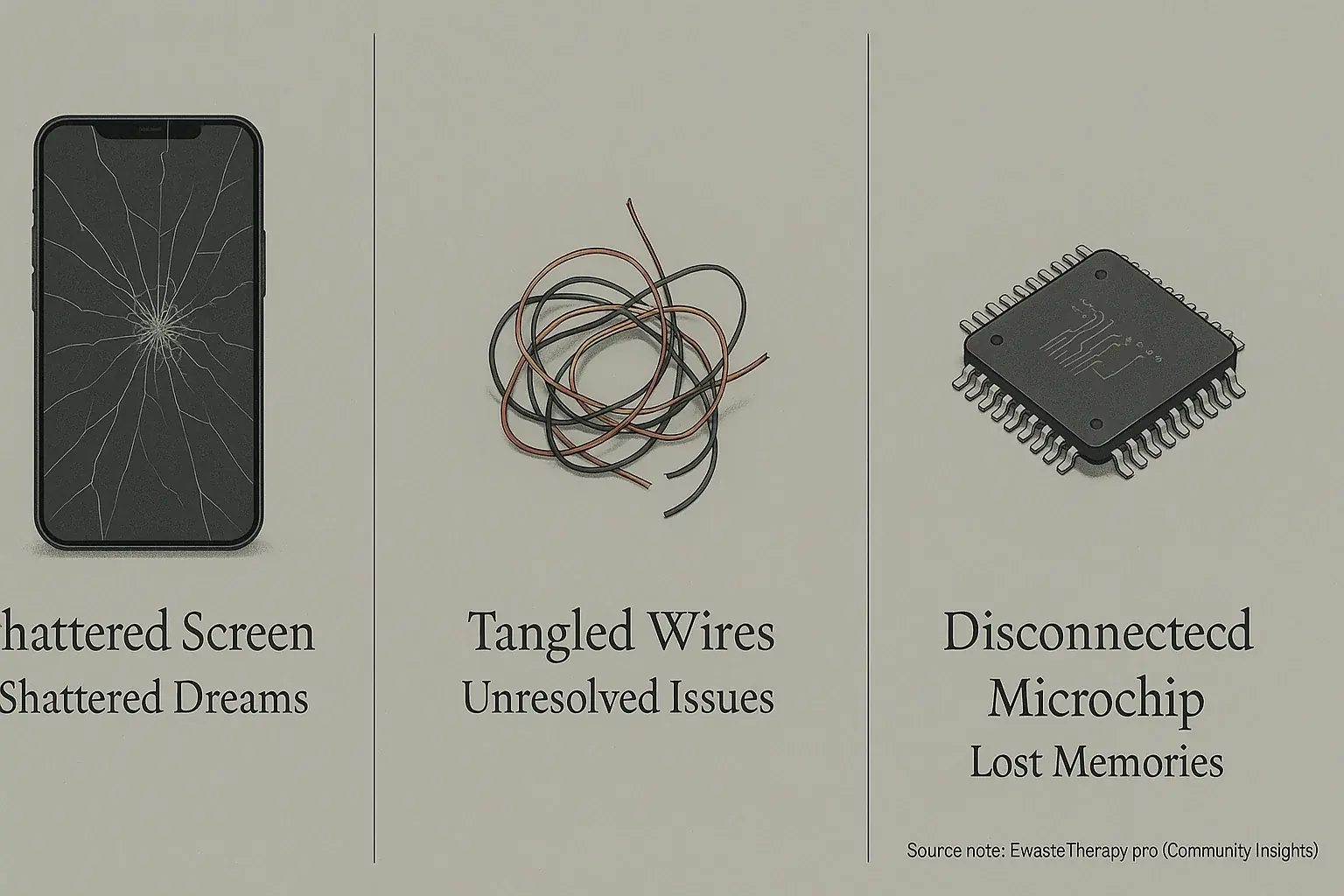
Discarded tech components possess surprising symbolic weight. Grief amplifies this. Think about it. A shattered phone screen rarely means just broken glass. For many, it is a visual echo of shattered dreams. Broken connections. The abrupt end of a chapter. Countless individuals engaging with e-waste art therapy find themselves intuitively drawn to specific pieces. This selection often acknowledges deep, unspoken inner states.
Tangled wires? They often represent unresolved issues. Confusing emotions. The feeling of being ensnared by grief. A disconnected microchip might symbolize lost memories. A piece of identity feels gone. Perhaps a core belief no longer computes after loss. Experiences shared within the EwasteTherapy.pro community reveal something profound. Choosing a particular broken component is rarely random. It often marks the start of a non-verbal dialogue with one's own sorrow. A visual confirmation of an internal landscape.
Working with these symbolic components transcends mere art creation. You give tangible form to intangible feelings. You externalize the internal chaos. This act of recognition offers profound healing. It allows you to perceive your sorrow in a new light. You might even discover a fresh perspective on the brokenness.
From Fragments to Wholeness: How Assembling E-Waste Becomes a Path to Repair
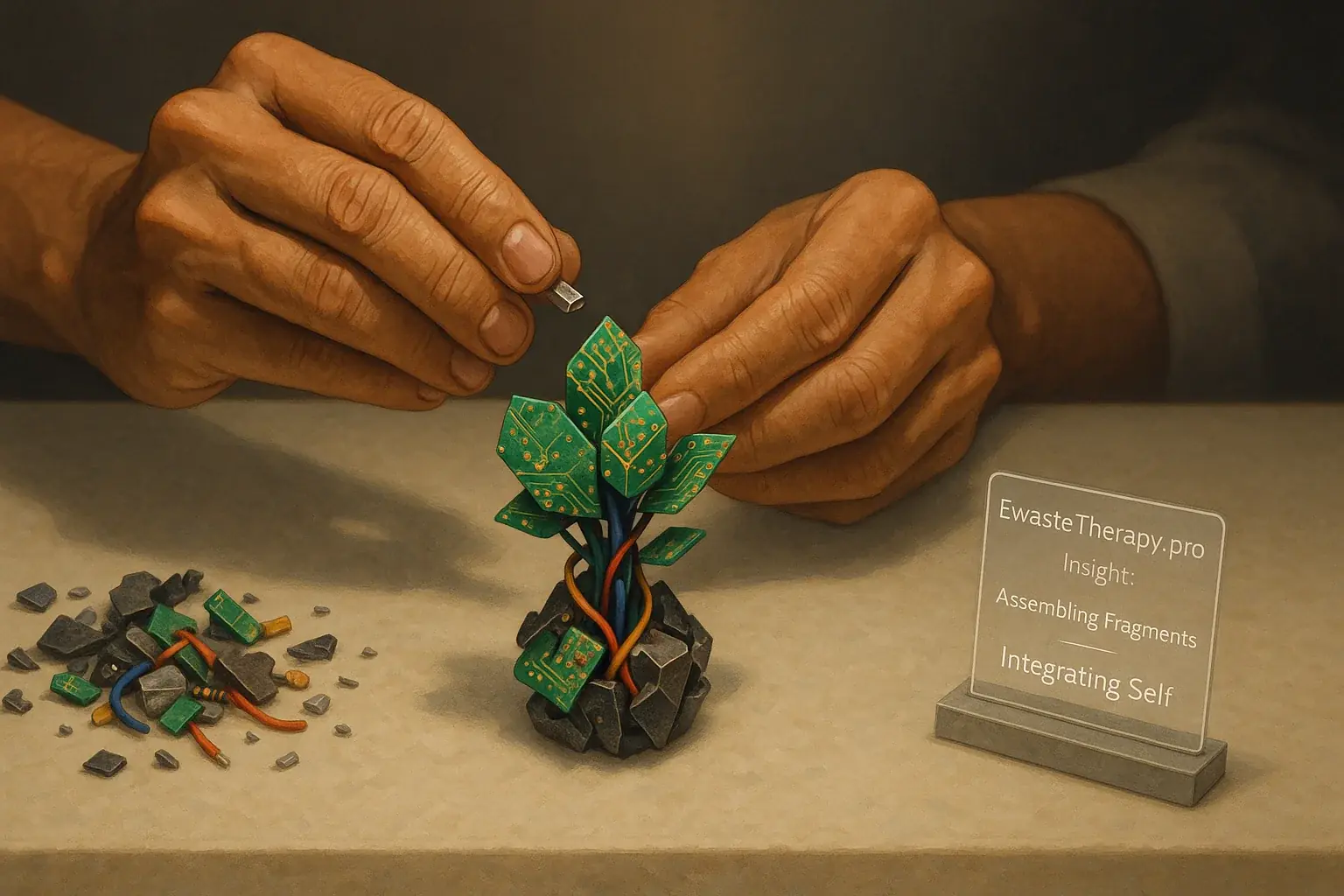
Once you have chosen those resonant fragments, the real magic begins: the act of assemblage. This is not just gluing pieces together. It is a powerful, deliberate process of rebuilding. You are taking what feels broken. You give it new form, new purpose. EwasteTherapy.pro's therapeutic frameworks show this physical act directly mirrors an internal process of integration.
Think of every connection you make. Each secured piece. These are small steps toward integrating your own fragmented feelings. Users often describe a profound sense of agency. They transform chaos into order, even with a small sculpture. It is a tangible way to say, 'I can put things back together, even if they are different now.' A surprising insight emerges from our community’s experiences. The 'struggle' of fitting a difficult piece, of finding the right connection, often mirrors the very real struggles of grief. Overcoming that small artistic challenge offers a micro-dose of resilience. This aids the larger healing journey.
Start small. Let the materials guide you. Do not force a preconceived idea. Focus on the process of making. The tactile sensations. The rhythm of your hands. Our analysis of extensive user-generated content at EwasteTherapy.pro confirms this mindful engagement is where deeper healing often happens. This journey transforms fragments. It builds wholeness.
Your Healing Canvas: E-Waste Art Project Ideas for Grief & Loss
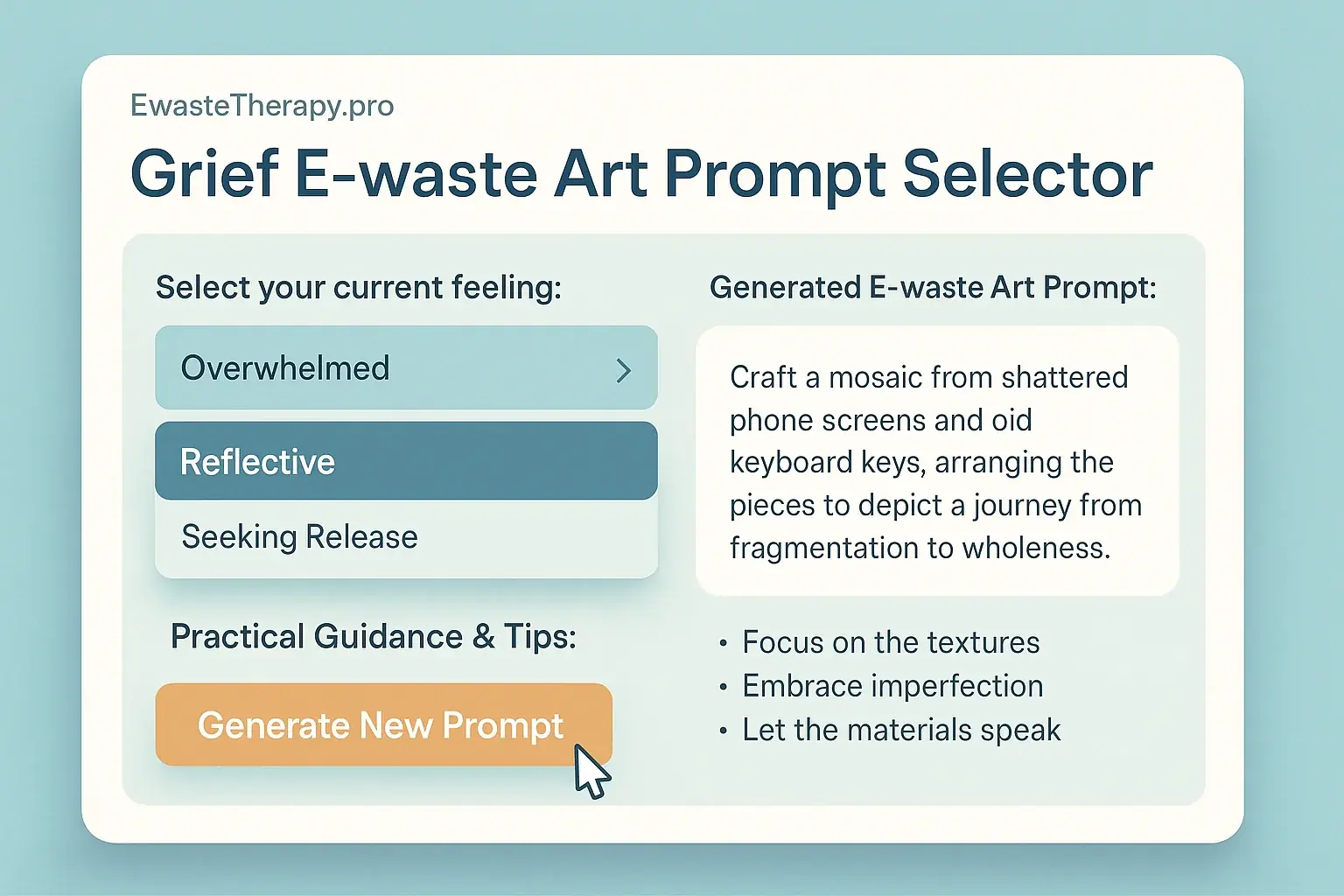
Find Your Healing Prompt
Select a feeling or state related to grief or loss that resonates with you right now, and discover a tailored e-waste art prompt to help you explore it.
Your personalized e-waste art prompt will appear here.
Deep emotions sometimes overwhelm expression. Finding your artistic voice becomes difficult. Our interactive tool offers direct support. This tool helps you clarify current feelings. It then generates personalized e-waste art prompts. Practical guidance accompanies each suggestion. Many users report this breaks creative inertia.
Remember, no single "correct" creation method exists. The true therapeutic power resides in your process. Mindful interaction with e-waste materials unlocks emotional insights. Let our tool be a gentle compass. It is not a rigid map. Explore freely. Experiment often. Allow your art to reveal your unique healing path.
Holding Space for Healing: Safety & Self-Care in Grief-Focused E-Waste Art
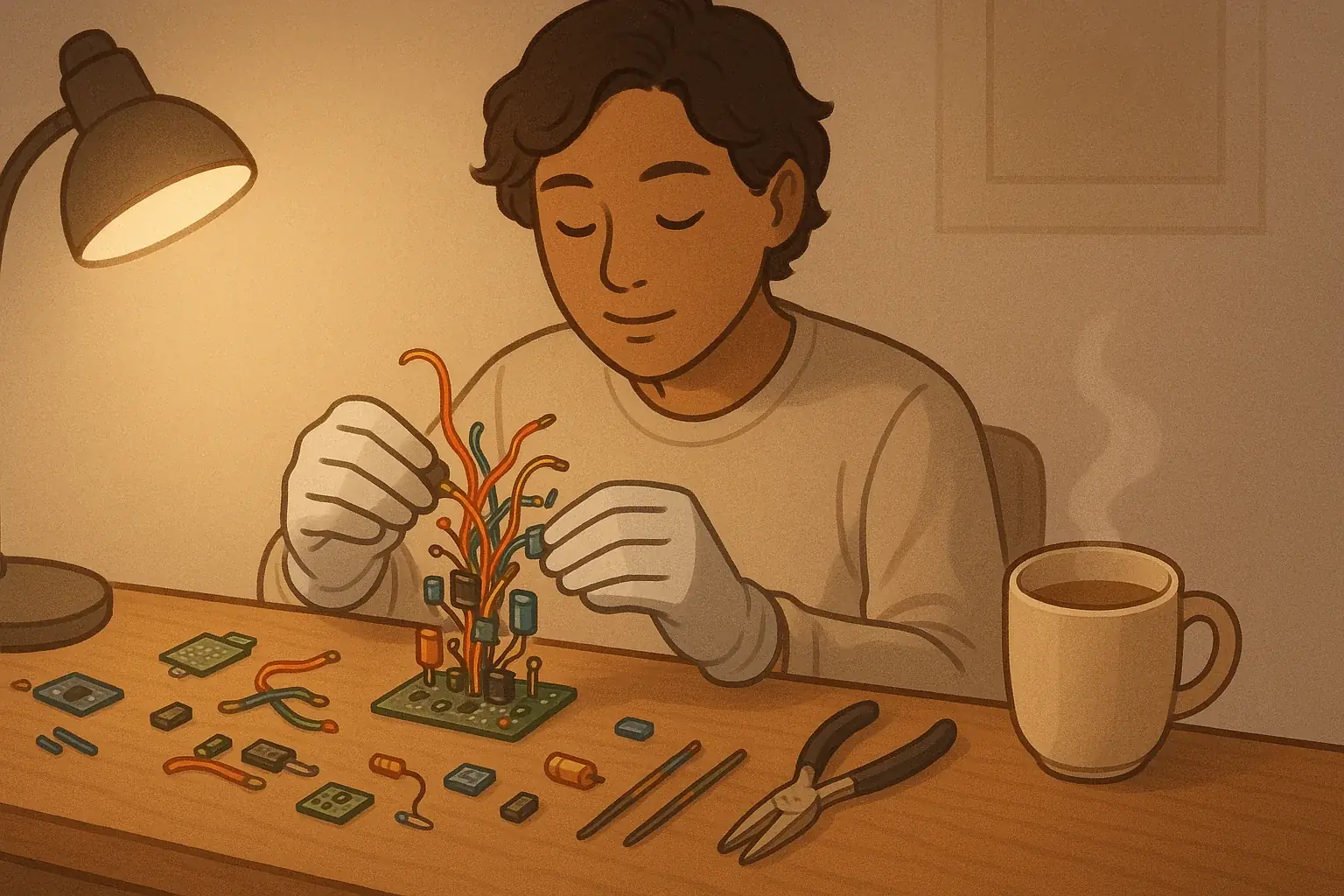
You dive into art for grief. You are opening a deep emotional well. EwasteTherapy.pro's therapeutic framework highlights this. Physical safety with e-waste components is essential. Always wear gloves. Work in a well-ventilated space. Creating a safe emotional container for yourself is equally important. This journey is about processing grief safely. It is not about 'fixing' it.
Listen to your body. Our analysis of user feedback underscores this. A particular component can feel overwhelming. A memory might surface intensely. Stepping back is perfectly acceptable. Users report that pacing themselves helps greatly. Taking mindful breaks is key. Sometimes switching projects provides needed distance. This journey is a marathon, not a sprint. A quiet truth emerges from many personal accounts. The e-waste 'mess' on your workspace can reflect grief's internal chaos. Organizing your tools and materials offers a small, tangible action. This act can help organize your thoughts and feelings, even for a moment.
Remember an important insight. E-waste art is a helpful tool. It is not a substitute for professional support. Our expert-developed therapeutic frameworks clearly state this. Grief can feel too heavy. You might struggle to cope. Reaching out to a therapist shows immense strength. A counselor provides essential assistance. We guide your creative e-waste art journey. Professional help offers a distinct, important layer of care.
